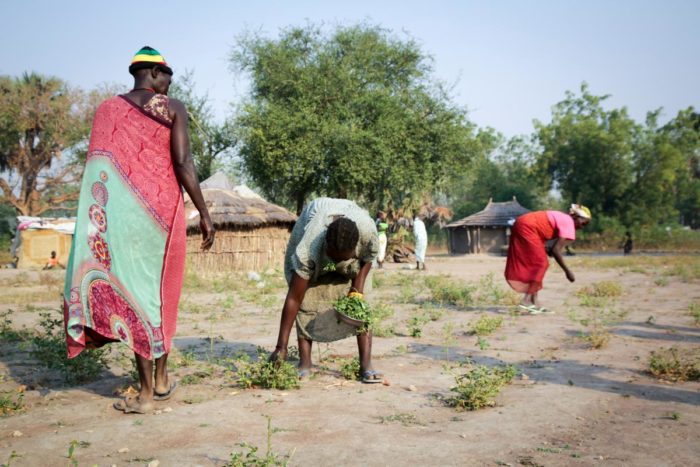10th April, 2017

A humanitarian aid agency on Monday said hunger forces South Sudanese to eat leaves from trees as food runs out even in crisis areas where famine has not been declared.
The Norwegian Refugee Council (NRC) said that children and others in a community outside Aweil Centre County in the north of the country where its staff visited are surviving on trees and seed stocks.
NRC’s Country Director in South Sudan, Rehana Zawar said that eating barely edible wild foods is a coping strategy for communities trying to survive a food crisis.
“The bitter leaves eaten by families we spoke to are from the Lalop tree, and have limited nutritional value.
“When families eat these leaves and little else, malnutrition quickly follows,’’ Zawar said in a statement.
The agency said the emergency teams on the ground have helped support more than 100,000 people affected by the food crisis since the declaration of famine in parts of the country.
According to UN, insecurity and lack of access have complicated an already worrying situation as more than 100,000 people face starvation in the famine-declared parts of the country, and a further one million are on the brink of famine.
There are also fears that by the height of the lean season in July, some 5.5 million people could face severe food insecurity across the country.
Additionally, since December 2013, about 3.4 million people have been displaced, including about 1.5 million who fled as refugees to neighbouring countries, NRC said food crisis has hit Amothic in Aweil Centre County hard.
The agency noted that while famine has already been declared in Leer and Mayendit counties to the south, villages outside Aweil are also running out of food.
Formerly known as the state of Northern Bahr el Ghazal, the counties which make up this region are currently in the crisis phase or emergency phase of food security; the latter is one level short of famine.
This region previously was the site of a famine in 1998.
Zawar said international donors need to provide more funding for emergency aid for South Sudan to stop the famine and food crisis escalating.
“We have a catastrophe occurring right before our eyes, and the time to act and stop this crisis from spreading is now,” she said.
The aid agency said the consumption of seeds is especially alarming in areas where famine has already hit as some families have been eating wild water lilies, or seeds to survive.
“Without seeds for cultivation, families will have nothing to plant for the next growing season.
“This could worsen the food crisis, and threaten to spread the famine to adjacent areas,” the charity said.
Across much of the country, household access to food and cash income has declined as conflict has disrupted planting, harvesting and other livelihood activities, according to food security experts, FEWSNet.
Families are fleeing the region in search of food, with many crossing into Sudan.
More than 35,000 people have already fled South Sudan and crossed the border to Sudan this year, according to UNHCR.
The aid appeal for South Sudan requires 1.6 billion dollars to support people in need. So far only 18 per cent of the appeal has been funded.


